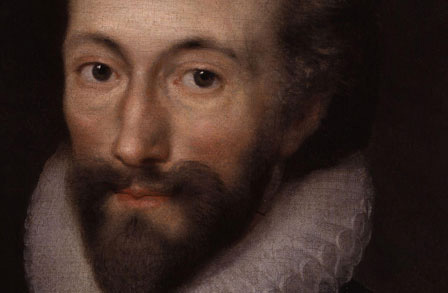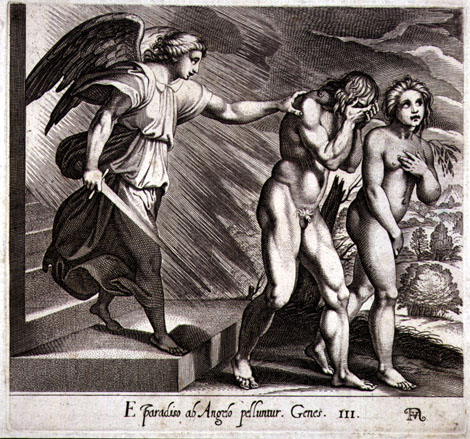About the author – Born in 1856 in a well known westernized family, Dutt had the advantages of education and happy family which proved to be crucial to her development as an artist. Accredited with collection of poems like A Sheaf Gleaned in French Fields (1875), and Ancient Ballads and Legends of Hindustan (1882), she could have had achieved much more had she lived beyond her twenty first year. She died of tuberculosis in 1877.
About the poem – This poem is clearly one of the most impressive longish poems of Toru Dutt. It is a long lyrical ode, serious, meditative, and intense, with well crafted stanzas and an equally sublime style.
Analysis of the poem – The poet gives a description of the creeper and the aged and scared tree and goes on to describe the various forms of avian life that teems in it. Though the creeper strangles other trees this tree is quite comfortable with it. The next stanza is a wandering description of daylight, baboons, and other floral and faunatic details. The tree is seen to be situated near a tank full with lilies as white as snow. The tree is precious to the poet for it is a conduit to her childhood and its fond memories and a source of purging of her pain. She hears a cry and takes it to be the elegy of the tree which reaches distant shores via the sea. The dirge makes the narrator pendulate between the present and the past and back to present.
She associates her dislocation with the wail and the image of the tree is both a consolation and cause of her pain. She dedicates the poem to the tree where her siblings’ memory lie and wishes immortality to the tree which would be protected by her love from all manifestations of death. In a startling comparison the creeper on the tree is compared to a python which has encircled the tree. The python seen from the psychological perspective could be a symbol of insidious oppressiveness that tries to strangle the free run of the feminine creativity signified by the tree. And the fact that the tree wears the ‘python’ as a ‘scarf’ could be a statement of feminine resistance.
The tree symbolical of perseverance and fertility is also a symbol of the woman themselves who are known for the above mentioned qualities. Again, according to the Bible the tree and the serpent are potent symbols and their usage in the poem is more significant when we acknowledge the fact that Toru quite early in life had to embrace Christianity along with her father. ‘The summit near the stars’ refers to the huge height of the tree which seems to reach the sky. Here, however, one is led to believe that it is the image of the tree that she remembers from her childhood and hence the tree’s huge height. It is one of the features of romantic poetry where the poet indulges in the glorification of childhood memories. In these reminiscences often mundane objects are exaggerated to dizzying heights in order to accommodate the yearnings of the romantic poet.
Dutt is a romantic poet who does no different to the tree. The comparison of the creeper first with the python and then with the scarf is quite interesting. It is an anti climax of sorts where the image of a dangerous animal suddenly turns into a domestic image of a scarf. ‘Darkling’ here refers to the darkness from which the nightingale sings from the tree all night. Whereas casements meaning windows bring to our imagination the immortal line – ‘of charmed magic casements’ from Ode to a Nightingale by Keats, ‘Kokilas’ meaning cuckoo birds, bring in to the poem a strong flavor of Indianess. The leaves burdened tree is called ‘hoary’ since it has hoarded so much life inside it. ‘Companions’ obviously refers to the siblings of Toru. The ‘single beach’ and ‘sheltered bay’ denotes the shores of France and England where the Dutt family moved from India. The religious and intuitive sense is denoted by the expression ‘eye of faith’. Water wraith refers to the ghosts of the past which have an intertwined connection with water. Tranced, refers to sleepy, and ‘inner vision’ to the so called eye of faith already referred to. Borrowdale is an allusion of Wordworth’s Michael. This is the only reference to a real place in the entire poem which does make the poem fix to a real world. Both ‘Oblivion’s curse’ and ‘time’s shadow’ refer to death.
The theme of the poem is at one level, it is about a tree, in the poet’s Baughmaree house. But, as the poem develops, we find that it is about much more than just a tree. We notice that the tree expands both in time and space, acquiring almost supernatural dimensions. It begins to represent a whole world, becoming in sense, the tree of life itself (as already mentioned above, though here the analogy is between the mythological tree – ‘kalpa-vriksha’ which is said to be the tree that can make any of our wish come true). It is seen as sheltering a whole ecosystem. But most important, it comes to symbolize the very stuff of her being.
It is these images that the poet wishes to preserve. Memory, which seems fickle and fleeting, is sought to be strengthened through its association with a more substantial and long lasting object such as the tree. The tree, then, represents the very essence of the poet’s self, an anchor to her subjectivity, something which stabilizes her notion of who she is when she is far away. The poet wants the tree to be eternal since she wants her memories to be safe from the ravages of time. Thus here we see a sort of Pythagorian transfer of soul from a human consciousness to a floral one or vice versa. Ultimately what according to the poet saves the things we hold dear from ‘oblivion’s curse’? It is love, the greatest of all forces. This love of the poet empowers her imagination to bestow the tree with an eternal significance. We can notice that in Toru’s poem, the carrier of the longings for the immortality is a supremely romantic icon of the tree, not a man-made object like a Grecian urn.
In the organization of the poem as a whole and in the finish of the individual stanzas, in the mastery of phrase and rhythm, in its music of sound and ideas, Our Casuarinas Tree is a superb piece of writing. The poem is composed in five stanzas of eleven lines each which aptly convey the lyrical beauty of the poem.
The poem is about memory, imagination, and transcendence, in which the tree becomes a symbol not only of the poet’s joyous childhood but also, through an extension in time and space, of the poet’s longing for permanence and eternity.
Some online learning platforms provide certifications, while others are designed to simply grow your skills in your personal and professional life. Including Masterclass and Coursera, here are our recommendations for the best online learning platforms you can sign up for today.
The 7 Best Online Learning Platforms of 2022
- Best Overall: Coursera
- Best for Niche Topics: Udemy
- Best for Creative Fields: Skillshare
- Best for Celebrity Lessons: MasterClass
- Best for STEM: EdX
- Best for Career Building: Udacity
- Best for Data Learning: Pluralsight
















